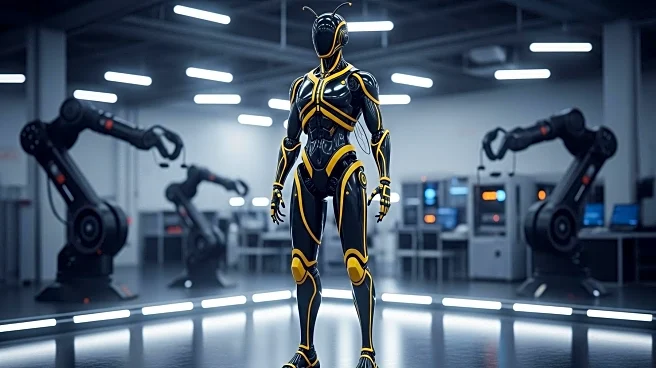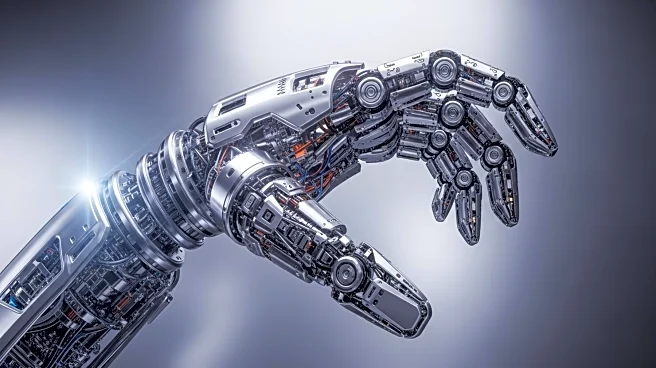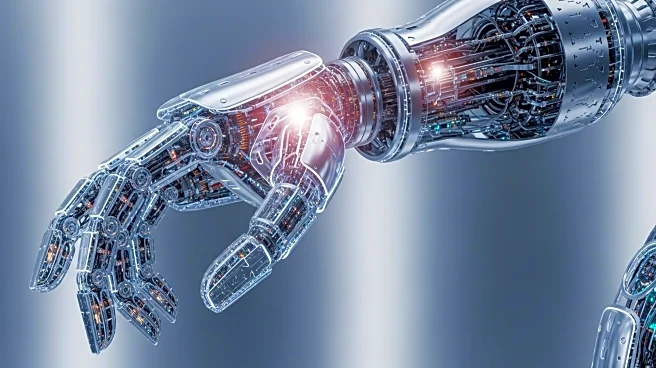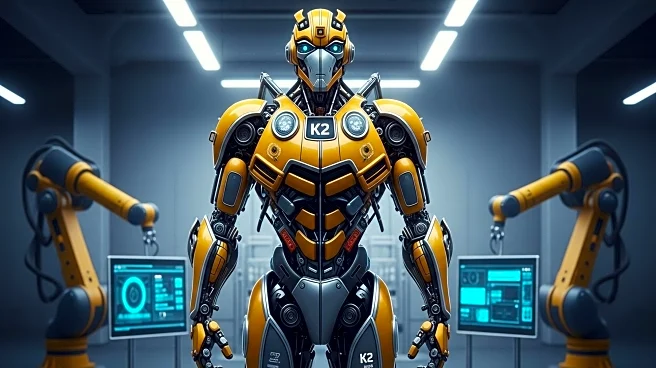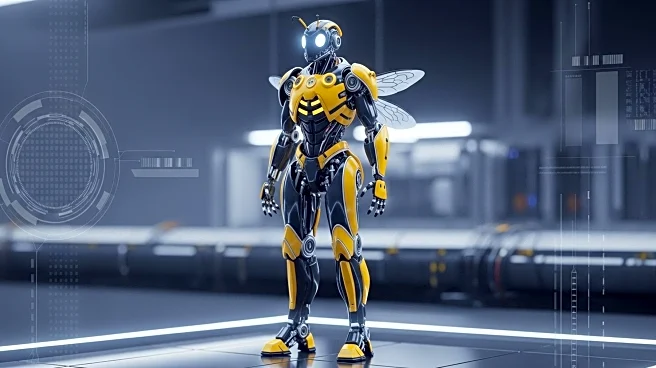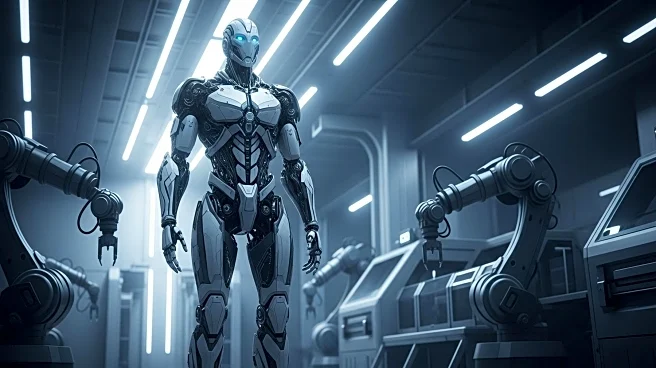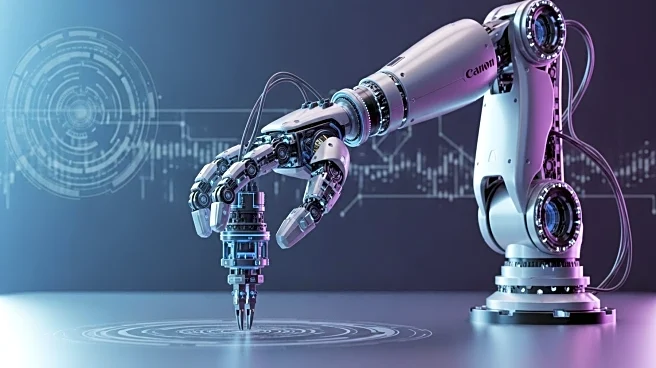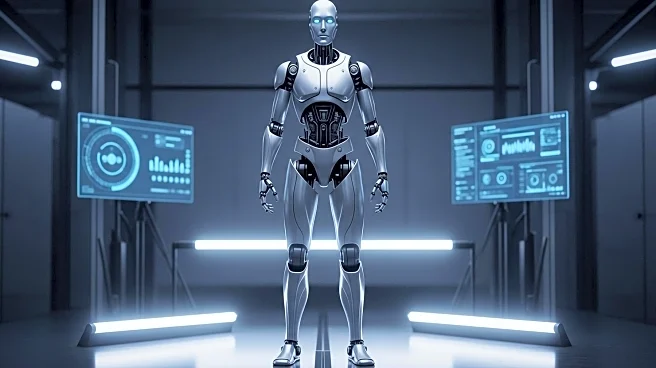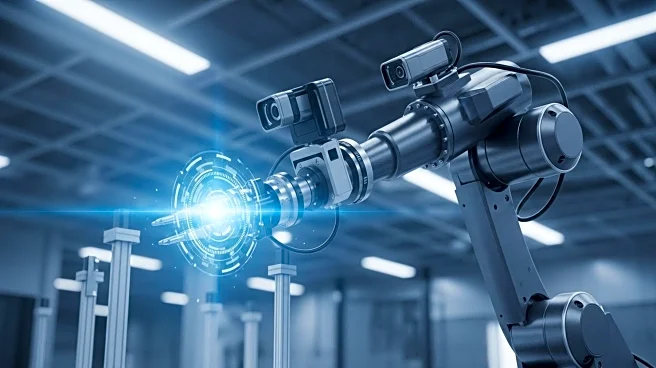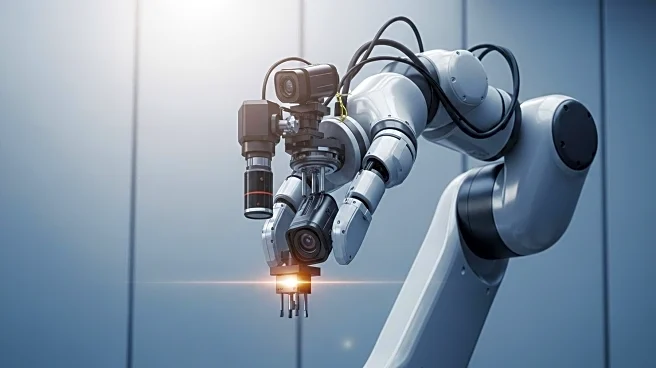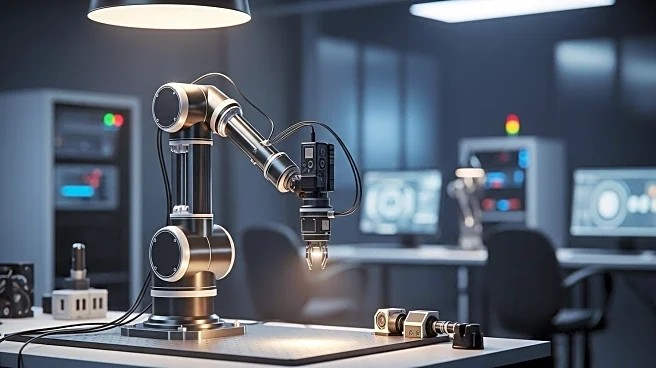What is the story about?
What's Happening?
Kepler Robotics has announced the commencement of mass production for the K2 Bumblebee, marking a significant milestone as the world's first commercially available humanoid robot powered by Tesla's hybrid architecture. This development is part of a broader trend in humanoid robotics, with upcoming events such as IEEE Humanoids, World Robot Summit, and IROS 2025 highlighting advancements in the field. The K2 Bumblebee is designed to perform complex tasks by converting visual information and instructions into motor commands, showcasing its capability to learn and adapt across different embodiments.
Why It's Important?
The mass production of the K2 Bumblebee represents a pivotal moment in the robotics industry, potentially transforming sectors such as manufacturing, healthcare, and service industries by introducing advanced humanoid robots capable of performing intricate tasks. This development could lead to increased efficiency and reduced labor costs, while also raising questions about the future of human employment in roles traditionally filled by humans. The integration of Tesla's hybrid architecture further emphasizes the growing collaboration between tech giants and robotics companies, potentially accelerating innovation and adoption of humanoid robots.
What's Next?
As Kepler Robotics continues to produce the K2 Bumblebee, stakeholders in various industries may begin to explore the integration of humanoid robots into their operations. This could lead to increased investment in robotics technology and further advancements in AI capabilities. Additionally, upcoming robotics events may provide platforms for showcasing new developments and fostering collaboration among industry leaders, potentially influencing future trends in humanoid robotics.
Beyond the Headlines
The introduction of commercially available humanoid robots like the K2 Bumblebee raises ethical and societal questions regarding the role of robots in everyday life. As these robots become more prevalent, discussions around privacy, security, and the ethical implications of AI-driven decision-making may become more prominent. Furthermore, the potential for humanoid robots to perform tasks traditionally done by humans could lead to shifts in workforce dynamics and necessitate new policies to address these changes.
AI Generated Content
Do you find this article useful?
